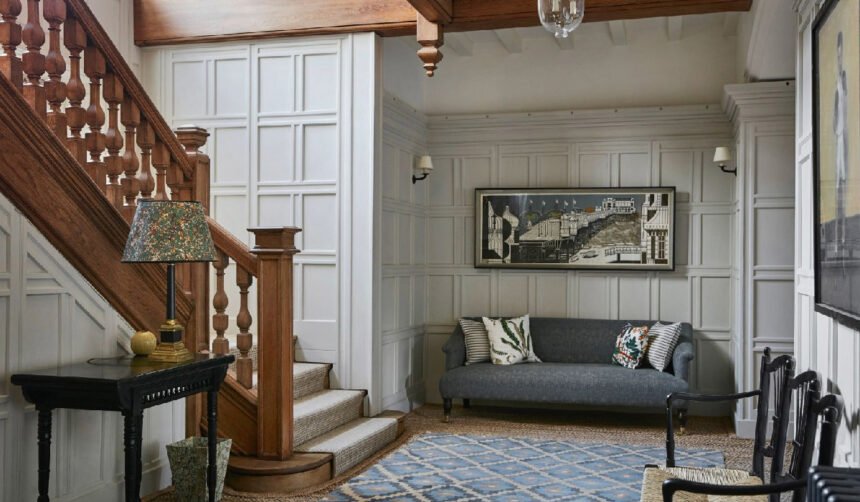In every home or space we enter, there’s an immediate feeling we get. Sometimes it’s cozy and warm, sometimes fresh and energizing, or perhaps calm and serene. These emotional reactions are not accidental. Much of this experience is shaped by one of the most powerful elements in design—interior painting.
Painting the interior of a space is not merely about adding color to walls. It’s a blend of creativity, precision, psychology, and craftsmanship. The person responsible for executing this delicate balance is known as the Interior Painter—a professional whose work impacts how we feel, think, and function within a space.
Let’s explore the layered world of interior painting, its process, purpose, and why it’s an essential part of both art and architecture.
The Importance of Interior Painting
The interior of a room is more than just its structure. It’s the canvas where our lives unfold—where we rest, work, eat, dream, and connect. The colors and finishes on the walls shape our everyday experiences in subtle yet powerful ways.
Interior painting offers:
- Aesthetic Enhancement: It brings visual harmony and character to a space. Whether it’s a minimalist palette or bold tones, the right paint elevates interior design.
- Protection: Paint acts as a shield, protecting surfaces from moisture, dust, and daily wear and tear.
- Mood and Emotion Control: Different colors evoke different emotions. Blue soothes, red energizes, yellow uplifts, and green balances. The impact is psychological as much as it is visual.
- Value Addition: Well-executed interior painting can significantly boost the value of a home or property by giving it a clean, fresh, and modern appearance.
The Psychology of Color in Interiors
Color is more than a matter of taste. It’s deeply psychological. Professional painters often work in collaboration with designers or directly with homeowners to choose the best tones for the function and vibe of each room.
- Living Rooms: Often painted in warm, welcoming tones like soft beiges, earthy browns, or light greys.
- Bedrooms: Calming shades like pale blues, muted greens, and soft purples help foster relaxation and rest.
- Kitchens and Dining Areas: Energetic tones like yellows or subtle reds can stimulate appetite and conversation.
- Home Offices: Blues and greens help increase focus, while off-whites and light greys promote clarity and reduce visual distraction.
Selecting the right color isn’t just about what looks good—it’s about understanding the psychology of the people who will live and work in those painted spaces.
The Process of Interior Painting
A professional Interior Painter doesn’t simply grab a roller and start painting. There’s a step-by-step process that ensures high-quality results, long-lasting finishes, and client satisfaction.
- Consultation and Color Selection
Before the first drop of paint is applied, the painter meets with the client to understand the goals of the project. Are they aiming to modernize? Create a relaxing space? Add character? Based on this, color options and finishes are proposed. - Surface Preparation
This is one of the most critical steps and includes:- Cleaning surfaces
- Filling cracks and holes
- Sanding rough areas
- Applying primer for better paint adhesion
- A smooth, clean surface ensures the paint adheres evenly and looks professional.
- Taping and Covering
Floors, furniture, and other non-painted surfaces are carefully covered with protective material. Taping edges ensures crisp lines and prevents unwanted smudges. - Painting
Using brushes, rollers, or spray tools depending on the area, the painter applies the chosen paint. Often, two or more coats are needed for full coverage and depth of color. - Inspection and Touch-ups
Once the paint is dry, the painter inspects the walls under various lighting conditions to identify any imperfections. Touch-ups are done as needed. - Cleanup
A truly professional finish includes a clean workspace. Paint cans are sealed and removed, protective materials discarded, and the area returned to the client—better than it was before.
Tools of the Trade
The artistry of an Interior Painter is enhanced by the quality of their tools. Common tools include:
- Rollers and Brushes: Different sizes for base coats, edging, and details.
- Painter’s Tape: For clean, sharp edges.
- Drop Cloths: To protect floors and furniture.
- Extension Poles: For reaching high ceilings and walls.
- Putty Knives and Sanding Tools: For surface preparation.
- Ladders and Step Stools: For safe access to all heights.
The choice of tools depends on the room’s complexity, texture of walls, and type of paint being used.
Types of Interior Paint
Different finishes serve different functions, and a skilled painter understands when and where to use each:
- Matte/Flat: No shine, great for hiding wall imperfections. Best used in low-traffic areas.
- Eggshell: Slightly shinier than matte, easier to clean, suitable for living rooms and bedrooms.
- Satin: A soft sheen, ideal for hallways, kitchens, and bathrooms.
- Semi-Gloss and Gloss: Highly durable and reflective. Used for trim, doors, and high-moisture areas.
Each finish also reflects light differently, affecting how color appears in different times of the day.
Challenges Faced by Interior Painters
Though it may seem straightforward, interior painting poses several challenges that only skilled painters can navigate effectively:
- Matching Colors in Different Lighting: A color may look perfect under showroom lighting but appear completely different in natural daylight or under artificial bulbs at home.
- Achieving Smooth Finishes on Problem Surfaces: Older homes may have uneven walls, water damage, or peeling paint that requires special treatment.
- Tight Deadlines: Especially in commercial settings or during renovations, painters often work on strict timelines while ensuring precision.
- Client Expectations: Managing expectations, adjusting color choices, and explaining the impact of finishes requires patience and professionalism.
These challenges demand more than just technical skill—they require communication, adaptability, and attention to detail.
The Rise of Eco-Friendly Painting
As environmental awareness grows, many clients are now seeking eco-conscious painting options. This has led to the rise of:
- Low-VOC and No-VOC Paints: These paints release fewer volatile organic compounds, making them safer for indoor air quality.
- Natural Pigments: Derived from plants, minerals, and other organic sources.
- Sustainable Practices: Responsible disposal of paint waste, using recyclable materials, and minimizing environmental impact.
An Interior Painter who stays updated on green trends offers added value and demonstrates a commitment to both quality and responsibility.
DIY vs. Hiring a Professional
Many homeowners consider DIY painting to save money. While this may work for small touch-ups or single walls, larger interior projects benefit greatly from hiring a professional painter.
Benefits of Hiring a Pro:
- Quality Results: Clean edges, smooth surfaces, and durable finishes.
- Time Efficiency: Professionals work faster while maintaining standards.
- Proper Preparation: Ensuring the job lasts longer and looks better.
- Expert Advice: On color selection, finishes, and maintenance.
A professional Interior Painter in Newberry doesn’t just change wall color they enhance the feeling of the space and elevate the environment overall.
Conclusion: Painting as Functional Art
Interior painting is both a science and an art. It’s about choosing the right colors and applying them with care, precision, and vision. A well-painted interior transforms a house into a home, a workplace into a creative space, and a plain room into a reflection of personality and purpose.
Behind every finished wall is the quiet, skilled hand of the Interior Painter someone who understands not just color theory and surface prep, but how spaces can shape human experience. Their work might be silent, but it speaks volumes every time someone walks into a room and feels, even without knowing why, “This just feels right.”
For More Information, Visit Dotmagazine









